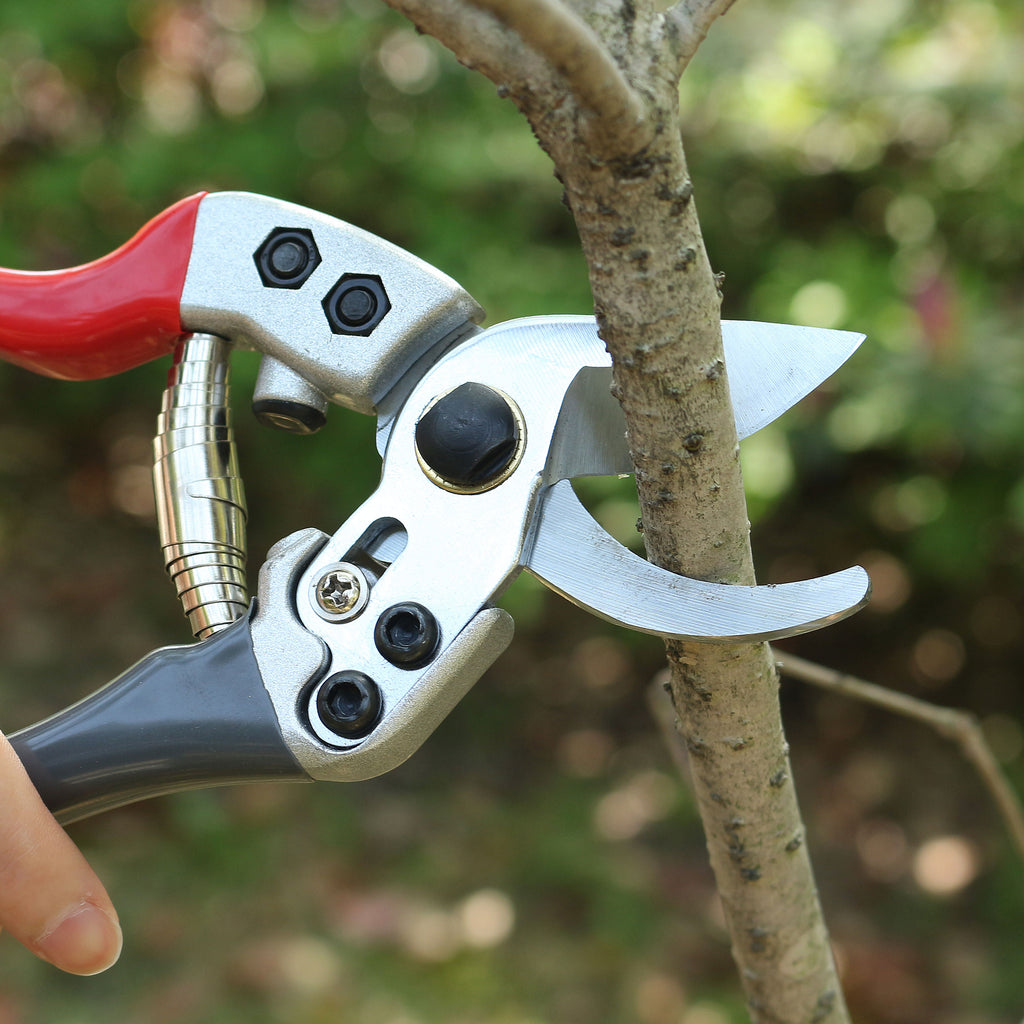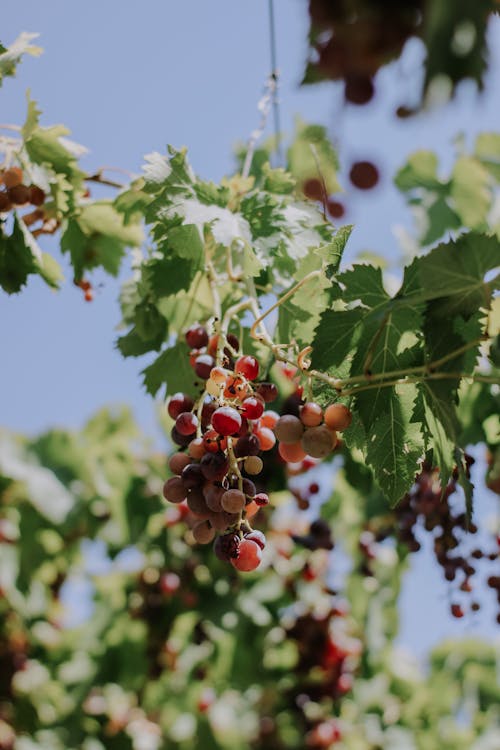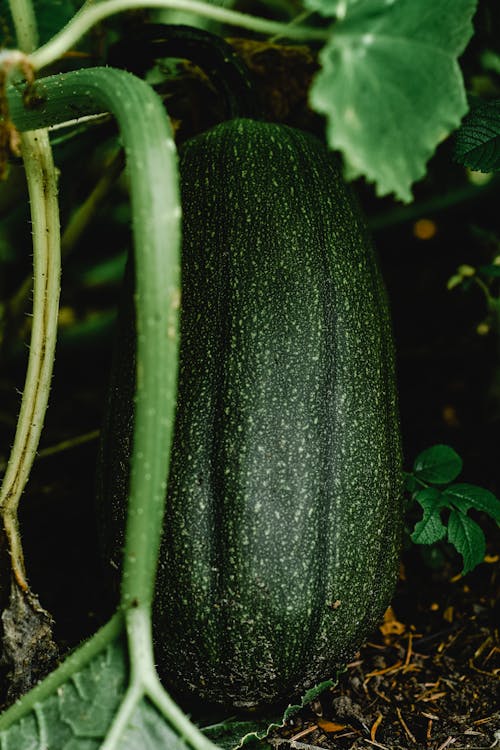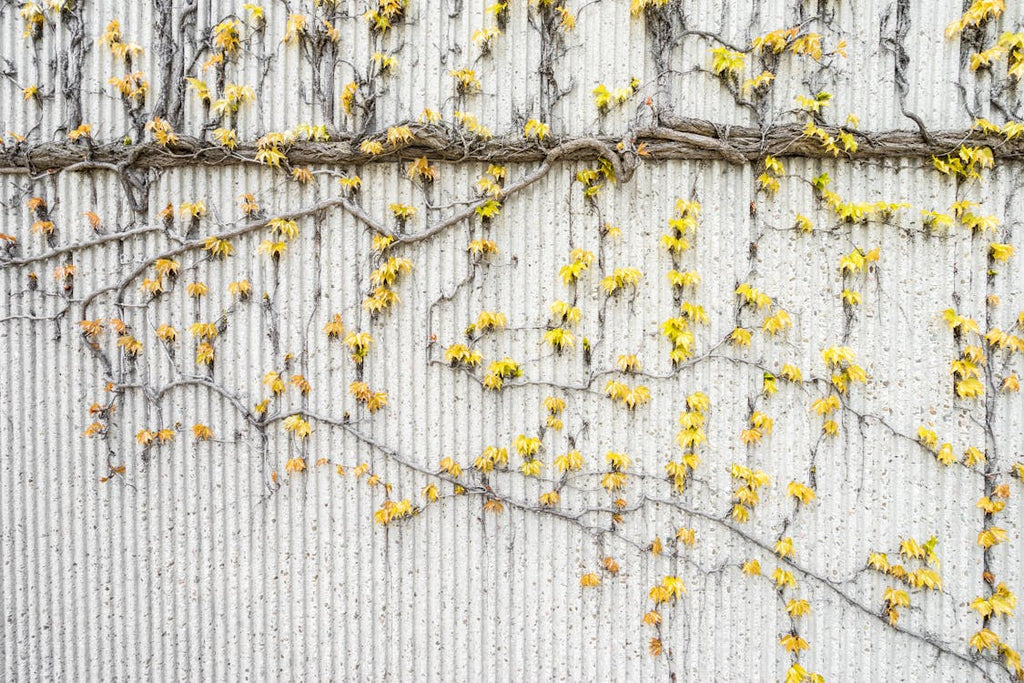
Vines and bines are common plant features, which evolved so that the plant could cover more ground, grow vertically and get more sunlight, and take advantage of existing supports without having to spend the energy creating its own stem or truck. The features that make vines advantageous in the wild also help in the garden. Vining plants can add vertical interest, act as groundcover, or fill in spaces that might otherwise be difficult to cover. Some of our favorite garden veggies come from vines, including cucumbers, squash, melons, and some kinds of tomatoes. Caring for vines is generally fairly straightforward, but with vining plants—particularly perennial vines—properly executed pruning is a must for healthy growth. Let’s take a quick look at the best practices for pruning some popular vining plants that you may already have in your garden.
Basics of Pruning Vines
While each type of plant has its own needs, there are some general approaches to pruning and to pruning vines that are applicable in most cases. It helps to remember that pruning any plant has several goals, including the following:
- Removing dead, damaged, or diseased stems or branches. For vining plants, this may involve removing any damaged, yellowing, or infested leaves as well.
- Removing tangles or branches/stems that may rub and cause damage to themselves or another part of the plant.
- Removing suckers and errant stems, which may detract from overall growth and health while also reduce the amount of flowers or fruit produced.
- Direct the growth of the plant, either by training it in a certain direction or keeping it to a given size.
- Thinning the plant to increase air flow and help support healthy growth and healthy soil/root conditions.
All of these are best accomplished using clean, sharp, high-quality tools and by taking care to observe the plant and make cuts at the most appropriate places.

Pruning Grapevines in the Home Garden
We’ve written before about growing grapes at home, so we encourage you to check out that blog for more information on the subject. Caring for grape vines can be a complex affair—most grape varietals yield best on new growth shoots that emerge from one year old vines. There are a number of possible techniques for pruning grapevines; it seems like each source we consult has a different theory and a different approach. Most grapevines in the home garden are best tended with a technique called cane pruning, which involves removing most of the previous year’s growth, leaving only a handful of fruiting canes to get things started in the next season. An alternative—spur pruning—may be more appropriate for commercial grape production or older, more established vines, but you’re less likely to encounter those in the home garden.

Pruning Cucumbers, Melons, and Squash
Contrary to popular belief, common veggie vines like cucumbers, melons, and squash may benefit from occasional pruning. The key is to avoid pruning the main vine/stem—that’s what allows for good healthy growth and fruit production. Instead, try to remove yellowing or damaged leaves and suckers (the smaller stems that grow from the joint of a leaf and the main stem). When pruning make sure to leave the main stem, its leaves and flowers/fruit alone. Also, avoid removing the long thin grippy tendrils—plants use this to climb or support themselves. Pruning your vining veggies can also be a good chance to inspect them for insect damage, train the vines to grow in the right direction, and harvest any fruit that’s ready to be removed.

Pruning Decorative Plants
This is where pruning goes back to being complicated—every species and varietal of plant has its own pruning needs, and we can’t list them all here. Instead we’re going to cover some of the most common garden vines and the basics of how to prune them. Let’s dig in!
- Bougainvillea (Bougainvillea spp.) flower on new growth, and tend to flower in several cycles throughout their growing season. It’s best to prune after flowering ends, with a focus on removing suckers and tangles. This encourages new flower buds and healthy outward growth.
- Trumpet Creeper (Campsis radicansand spp) is an aggressive and hardy plant in many climates, so pruning several times throughout the season may be necessary. You can prune this plant thoroughly—many gardeners cut theirs back to about 12 inches/30cm at the end of the growing season. Trumpet creeper produces flowers only on new growth and it can grow quickly, so this kind of vigorous pruning is helpful.
- Honey suckle (Lonicera spp.) are generally best pruned in late winter or early spring in order to keep them under control and encourage new growth—which is where their lovely flowers appear. This is another plant that can be pruned aggressively, with many gardeners opting to remove around 1/3 of the oldest stems at pruning time.
- Confederate Jasmine (Tracchelospermum jasminoides) is another popular garden plant, but unlike many garden vines it’s best to avoid pruning old growth unless necessary to repair damage or train the plant in the right direction. Instead, we recommend pinching or pruning the tips to encourage lateral “bushy” growth along with light pruning of new growth to help the plant maintain the desired shape and direction.
- Wisteria (Wisteria spp) is a bit like roses, in that everyone has their own approach to care and pruning. The most popular species of garden wisteria—Japanese Wisteria and Chinese Wisteria—generally need pruning at least twice a year, in early spring and then in the late autumn/early winter after they’ve stopped blooming. Wisterias produce on old wood, so prune by trimming back the unwanted portions of this year’s growth.

Pruning Vines for Garden Success
Pruning your vines may seem like a tall order—pun intended—because it takes time, care, and the occasional use of a ladder. However when done carefully and thoughtfully, pruning can help many vining plants reach their full potential. So we hope you’ll give your vines the same attention many folks give their hedges and shrubs and provide them with a healthy pruning when the time is right.

Leave a comment